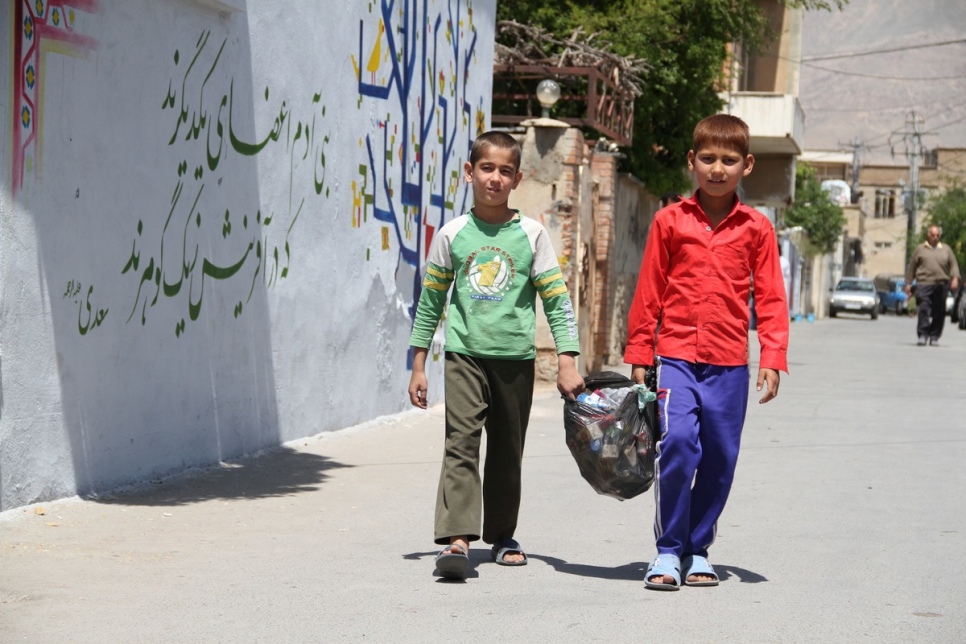Afghan refugees and the local community have come together to transform the Saadi neighborhood in Shiraz, Fars Province, with colorful works of art in a clean-up project. Like much of Iran, the Saadi neighborhood in Shiraz is home to a large population of Afghan refugees. Public health and hygiene hazards divided its community before the project began.
“It had become customary for Afghans and Iranians to blame each other – verbally and through graffiti and hate slogans – for the problems they saw around them,” recalls Alex Kishara, head of UNHCR’s Sub-Office in Shiraz.
Hoping to empower residents, local artists and over 60 community volunteers were brought together to design and implement a ‘clean-up and paint-up’ project, piloted by UNHCR and the government. The neighborhood is one of the poorest refugee communities in the country.
The community set to work, litter-picking and transforming the slogan-ridden walls into striking, colorful murals of art. Two artists – one Iranian, one Afghan – and five art students worked with the children to design and apply the patterns, offering artistic guidance during a week of painting, according to an article on the UNHCR website, unhcr.org.
The slogans and graffiti were soon replaced by skillfully-decorated murals of Iranian and Afghan carpets, as well as other motifs symbolizing shared harmony. One participant, 13-year-old Alireza, painted his favorite mural, portraying a large tree with splayed branches next to a text in Farsi that read: ‘The sons of Adam are limbs of each other, having been created from one essence’.
Interest From Unexpected Quarters
An Iranian volunteer also offered face-painting, and free medical check-ups were provided by an Afghan physician.
While some community members initially showed skepticism and criticized the project as “doomed to fail” or “a waste of time and money”, the murals elicited so much interest that soon many people joined in.
“More painting equipment had to be purchased, as many of the initially hesitant residents and landlords were soon keen to participate and see their own walls painted,” said Sharifi, an Afghan artist and designer.
The project instilled a new sense of bonding between Afghans and Iranians. Those who didn’t participate directly in the painting came to the streets to offer refreshments and food to the volunteers.
A 13-year-old orphaned Afghan boy Mohammad, who had returned to Saadi after falling out with his siblings, became involved in the project. He showed such creative talent that he has now been granted free enrolment at the Sepid Institute of Art.
Iran has shown great generosity in hosting over four million refugees during a protracted refugee situation of almost 40 years. With the support of the government and UNHCR, community-led projects like this one can continue to lead the way.


